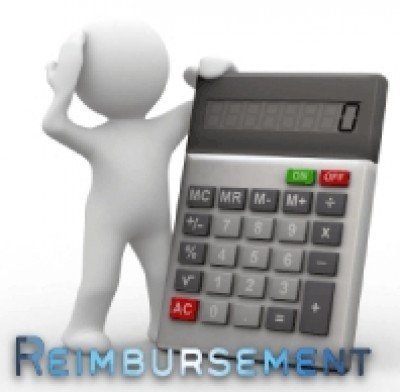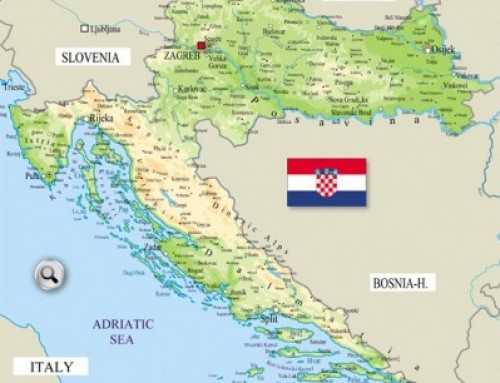Bratislava, 15-16 th April 2010
Not being a specialist in the area of Risk-Sharing & Value-based Pricing this event was an excellent introduction for me. Meeting P&R experts from some of the most important pharma companies in the world as well as hearing their detailed presentations was a really good experience.
The event was splendidly organized by Next Level Pharma in Trend Hotel,Bratislava, SK, near the city centre, which was an excellent location. The overall impression was ruined only by a bad weather which did not allow a proper sightseeing of the city and disturbed air traffic which made problems to the return flight of most participants.
It was evident from the presentations on both days that almost every country has the same problem: how to disburden healthcare system financially and thus enable that every patient receives the best therapy/medication possible.
Risk-shared agreements include responsibility of both sides (government and manufacturing) for the failure/success of drug. The largest number of these agreements exists in Australia (country known for many innovative pharmaceutical solutions (readability testing, intensive research and manufacturing of mAb, etc.). In the UK such approach creates additional administrative burden for healthcare system (especially for hospital pharmacists).
Anyhow, every country has a slightly different approach due to the specific health/economic environment.
Personally, I found the most interesting presentations from Italy (Dr. Paolo D.Siveiro from Italina Drug Agency) and Hungary (Mr.David Danko form Corvinus Institute in Budapest) since these are neighbouring countries and Italy is a referent pricing country for Croatia.
In Italy they developed conditional reimbursment models in combination with post-marketing evaluation of product via Register of new drugs. This concept is specially interesting for high-value oncological products. Italy has aslo dual system/approach for reimbursability and better patients access to medicines (Central – for regulation of all reimbursable medicines and regional- it can significantly affect patients access to the market). Prices negotiated with the Agency are maximal sale prices (the same for the whole country) and tenders are applicable only for hospital sector. Prices of hospital medicines are supervised via special electronic tracking system. There is a positive national list and reimbursement criteria are the same for in-patient and out-patient sector. Negotiation procedure also includes review of PhV data, price of the product in other EU countries and degree of innovation as well.
Basically conditional reimbursement in Italy has 3 options:
1. Cost sharing – initial discount on therapy for all eligible patients
2. Risk-sharing – initial discount for non-responders only
3. Payment by the result – there is no reimbursement for non-responders (full reimbursement for repsonders)
All these agreements are for limited time only and are subject of reevaluation. On the example of innovative oncological products (mAb mainly) it has been proven that this approach really enables faster access of these products for the patient and their smooth introduction to the market. There are also strong post-marketing activities (such as safety and effectivenes monitoring via special register of patients/new drugs) combined with this reimbursement model (http://monitoraggio-farmaci.agenziafarmaco.it/).
Hungarian model includes generic competition, elimination of all possible cost by identifying all sustainable cost-saving potentials, admission of value-added therapies (active substances) into the national formulary, introduction of the risk-shared agreements for innovative products and their periodical evaluation/monitoring. All risk-sharing agreements are part of price-volume agreements between MAH and National Health Insurance Fund. It is a general assumption that outcome monitoring should enhance the quality of drugs, at least theoretically.Types of risk-sharing agreements in Hungary are as follows: Simple payback, financial (more risk for the manufacturer) and therapeutic risk sharing (risk for payers because effectiveness of drug can be lower than in the approved dossier).
There are also some other risk-sharing schemes which are not in use in Hungary but which may be adopted soon.
As for the non-EU countries, there was an interesting presentation about reimbursement situation in Canada (by W. Neil Palmer). Healthcare system in Canada is almost entirely government funded but it does not cover outpatient costs. But since Canada has 4 different provinces there are also some major differences in the way health system and P&R function in every of them. Nevertheless, all 4 provinces have established a rather stable plan for drug distributions and other healthcare services for poor and senior citizens. Oncological products are covered by a separate cancer agencies in every province. The similar situation is with blood products and vaccine are covered by a public health schemes. Generic substitution is mandatory in all provinces but it is interesting to mention that prices of generics in Canada are much higher than in the US and Europe (though there are major differences between provinces – Quebec has the lowest prices). Up to now pharmacies in all Canada received allowances from generic companies but these are to be reduced to 25% soon which disturbs many. There are more instituions involved in P&R procedures in Canada but as for the criteria the main criteria remain affordability/budget impact.
In general, it is quite obvious that many countries rely on generic substitutions and referent pricing as a significant way of saving in healthcare sector. Is it really cost effective? Is it enough?Does this create additional office industry?Or do we need something else?
There was a lot of talk about the system of international referent pricing which could be suitable for the EU taking into consideration the joint currency and many other things. Otherwise, the situation about referent pricing is really complicated. Each country has at least 2 referent country (USA is a common choice for the rest of the world and Brazil for South America). But, on the other hand it is a Canadian experience that this system leads to the non-transparent risk sharing.
Where are the manufacturers in this story? Being aware of the high costs of drug development/manufacturing at the same time we cannot but to ask ourselves: what happens with approved efficacy of our product upon its release? Is it post-authorization data collection an objective way to confirm the value of your product which was already confirmed by controlled clinical trials? How can we track our product after release without such studies?What variables should we monitor and in what way? What should be improved and how? Real world data are obviously extremely important for the P&R procedures (especially when thinking about the outcome) but how to collect them efficiently (without too much financial burden) and how to interpret them in an objective manner? The inevitable conclusion is that neither solution is perfect for all involved parties and that despite all the efforts there are certain groups of patients which remain aside when it comes to the new therapies and measuring their effectiveness (mental and oncological patients). There is also a doubt concerning the efficacy of clinical studies.
Uncertainty ( no matter how we define it) remains during whole life cycle of every medicinal product. But uncertainty costs!
The above mentioned questions inevitably come to us when we think about pharmacoeconomics and the destiny of every medicinal product after its release an patient population.
Therefore, we need more events like this one because only through the intensive thinking and discussions can we discover new ideas and reach an agreement which could be satisfying for all interested parties.




Leave A Comment